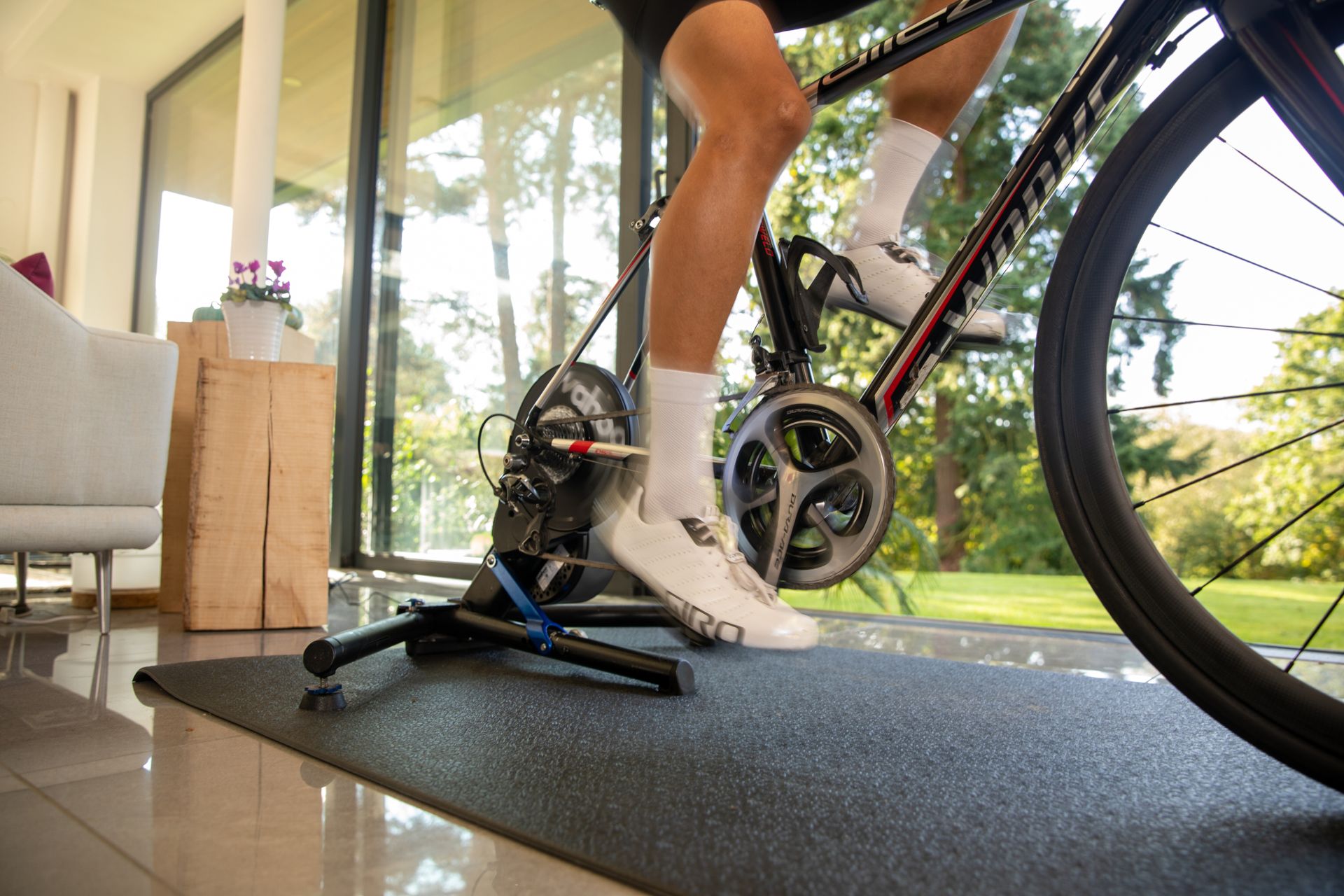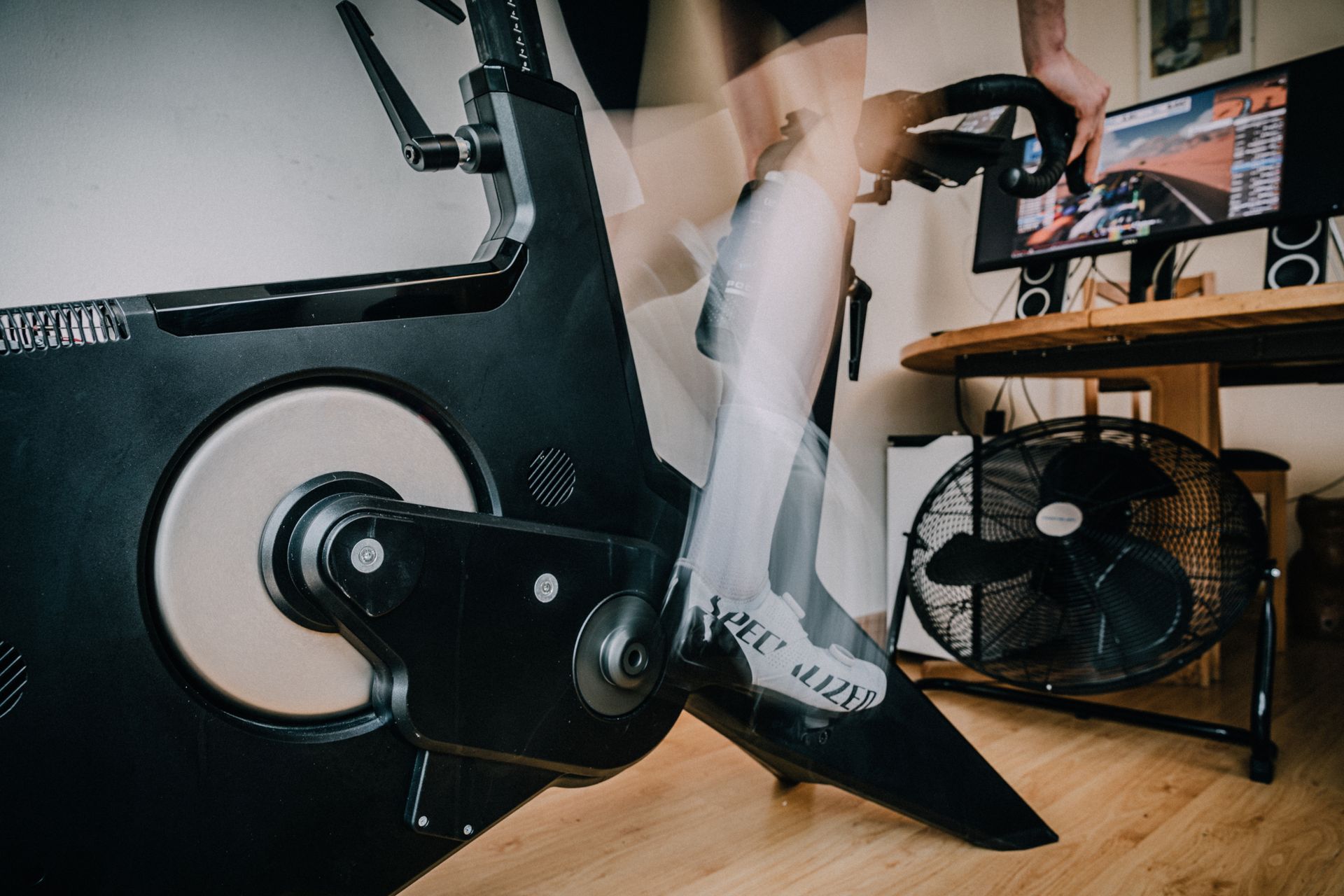Smart bike or top-end turbo: what’s the ultimate setup for training and racing on Zwift?
If money were no object, what would be the ideal arrangement for maximum performance?
- (opens in new tab)
- (opens in new tab)
- (opens in new tab)
- Sign up to our newsletter Newsletter


If there’s one thing which remains identical between racing indoors and out, it’s the unquenchable desire to optimise your equipment for the best possible performance.
But just like choosing the best bike upgrades, there’s no obvious best choice for every situation—a whole multitude of factors come into making the decision one way or another.
So, to shine some light on these considerations, we spoke to two eminent Zwift racers from the UK racing scene about their preferred setups.
But although we’re looking at the most expensive setups here, it’s worth remembering that one of the best parts of riding inside and eRacing is its accessibility. Now, $400 / £300 certainly isn’t a drop in the ocean, but with that you can get a power-reading Wahoo Kickr Snap ($399.99 / £299.99) or 4iiii Precision 3.0 power meter crank for $334.99 / £349.99 and take part in as many online events as you could possibly wish.
Zwift, and indoor training apps for cycling like it, can present a cost- and time-effective way to get that competitive fix.
But if you're looking to spend? Well, there's a clear choice between choosing the best smart indoor bike and best smart turbo trainer (a direct drive style one)? It's worth noting that smart bikes are more expensive, starting at $3,399 / £1,999 for the Wattbike Atom vs a direct drive turbo costing between $700 / £500 and $1,400 / £1,199.99.
Turbo trainer

Hywel Davies, 47, has a background in Ironman Triathlon but has turned his attention to Zwift racing and is currently ranked 1st in the UK and 10th worldwide. With a packed racing schedule, competing on five days a week you’re quite likely to have brushed virtual shoulders if you’ve been entering the pens.
When it comes to sprints, Davies agrees that smart bikes—in all their solidity—do offer a palpable benefit. But for longer efforts and races, he feels that the balance tips in favour of a road bike and turbo trainer setup.
He said: “For long race, like ones that go up the Alpe du Zwift (12.2km with an average gradient of 8.5%), I much prefer a turbo over the relentlessness of a smart bike. That little bit of movement, that side to side flex, it makes the ride a little more familiar—a bit more natural.”
Davies continued: “There are little things that just play on your mind in a long effort, such as the Q-factor of smart bikes tending to be a little wider than on a standard road bike.
"The ergonomics of the shifter hoods and the tactile feeling of changing gear, rather than pressing spongey a button, I find makes a huge difference to how comfortable I feel.”
A bike and turbo set up also makes it easier to keep your power numbers consistent between riding indoors and out. Recording using the same set of power meter pedals cuts out any concerns about power meters in different locations providing different readings.
Of course, it would be possible to swap pedals between a smart bike and your road bike—but that would be introducing more faff than it is to simply take a bike on and off a turbo, which negates one of the benefits smart bikes are supposed to bring.
Smart bike

Harry Mustard, 23, is a student at Edinburgh Napier University and something of an old hand when it comes to Zwift racing—having gotten started back in December 2018.
He and his team have previously won the Platinum League of the WTRL Team Time Trial—within which the best Zwifters from around the world compete—for a total of 10 times on the trot, a truly astonishing achievement.
But although Mustard certainly has a large engine, able to push over 400 watts for 20 minutes, his set up is geared toward maximising his sprinting potential—which stands at a peak five second power of just under 1,400 watts.
He said: “I used to have a CycleOps wheel-on fluid trainer, which was great at the time, but switching to a smart bike was a complete game changer.”
Now racing on a 44kg Wattbike Atom, Mustard’s approach to sprints has been transformed.
“I can get out of the saddle and completely hammer it without worrying about any bouncing or flex from the front wheel. I feel like all my power is going straight through the pedals and it really helps with focusing on the effort.”
Alongside the more obvious benefits of a smart bike include being always set up and ready to be ridden as well as the reduced maintenance of not having an exposed drivetrain to keep clean and gears indexed, Mustard has found the ability to easily tweak his on-the-bike position an unexpected aid.
“I did start off initially mimicking the setup of my road bike exactly, but after a while I raised the handlebars up a little bit and pulled them closer in towards me. I find I’m able to get a bit more power out in a sprint if I’m a bit more ‘compressed’”.
Is a smart bike the ultimate setup?
Yes—Harry Mustard
"A smart bike really helps in the sprints, the rock-solid platform makes it a lot easier to put out the watts. The ability to easily change my position has really helped me maximise my power on Zwift, while still keeping the setup of my road bike optimised for aerodynamics. It also makes it a lot easier to commit to sessions when the smart trainer is always set up and ready to go."
No—Hywel Davies
"For longer, more sustained efforts, the familiarity of my road bike attached to a smart turbo trainer really helps in terms of comfort—which in turn enables me to put out more power. The combination of the contact points and Q factor all being exactly the same, coupled with that little flex from side to side, all really makes a difference."

Thank you for reading 10 articles this month* Join now for unlimited access
Enjoy your first month for just £1 / $1 / €1
*Read 5 free articles per month without a subscription

Join now for unlimited access
Try first month for just £1 / $1 / €1

After winning the 2019 National Single-Speed Cross-Country Mountain Biking Championships and claiming the plushie unicorn (true story), Stefan swapped the flat-bars for drop-bars and has never looked back.
Since then, he’s earnt his 2ⁿᵈ cat racing licence in his first season racing as a third, completed the South Downs Double in under 20 hours and Everested in under 12.
But his favourite rides are multiday bikepacking trips, with all the huge amount of cycling tech and long days spent exploring new roads and trails - as well as histories and cultures. Most recently, he’s spent two weeks riding from Budapest into the mountains of Slovakia.
Height: 177cm
Weight: 67–69kg
-
-
 Milan-San Remo 2023: Route and start list
Milan-San Remo 2023: Route and start listAll you need to know about the first Monument of the 2023 season
By Ryan Dabbs • Published
-
 Summit finish and final day time-trial for 2024 Tour de France finale in Nice
Summit finish and final day time-trial for 2024 Tour de France finale in NiceStage 20 will finish atop the Col de la Couillole before final day race against the clock in Nice
By Tom Thewlis • Published

